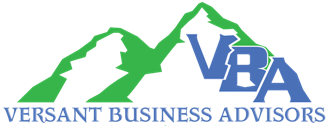Factors Affecting the Salability Of A Business
We have done extensive research on the sales of private companies and compiled a list of 21 factors that affect the salability of your business.
It should be no surprise to anyone that the financial results of the business ranks as the number one factor that affects the salability of a business. The remaining 20 items do not have the same weight as financials results and the order can be somewhat interchanged based on the business under discussion. However, savvy investors consider all of these factors when they evaluate a potential investment into a business.
Contact Us to learn how these factors might be considered in light of your business or investment strategy.
- Financial Results – Recent results and trend of sales, gross and net margins, balance sheet, working capital requirements, wages/payroll/occupancy costs, supportable seller’s discretionary earnings (“SDE”)
- Intellectual Property – Does the business have unique processes or products protected by patents
- Barriers to Entry – How difficult is it for someone to start a business in this industry
- Customers – Loyalty, quality, concentration, industry & geography, diversification
- Products and Services Offered – Variety, mix, pricing leverage, brand names, trademarks
- Productivity & Efficiency – Employees, computer & software releases, web site, point of sale system
- Industry Cyclicality & Seasonality – Does volume of work vary with the seasons or industrial cycles
- Number of years in Business – Number of years under the current owner
- The General Economy – U.S., state and local conditions
- Willingness to carry a Seller’s Note – An all cash price is typically discounted
- Scalability/Upside Potential and required additional investment, effort and risk required
- Business After Sale Issues – Training/mentoring, consulting availability, non-compete risk, pre-paid services, warranty exposure, returns, employee commitments, equipment leases and other liabilities to be assumed
- Competitive Threats – China, internet, home based, franchises, industry leaders
- Facility Lease – Rate vs. Market, term, renewal options, landlord reasonableness
- Employee Census – Years of service, age, pay rates vs. market, relatives, skill sets/licensing/certification pending retirements, worker’s compensation mod rate, unionization
- License Requirements & Regulatory Issues – Does the business operation require a license or is it highly regulated
- Vendor relationships, and pricing commitments & leverage
- Facility and Equipment – Age, condition, productivity, replacement cycle, work flow, capacity, technology
- Specific Location and Area Socio Economic Trend – A key success factor for some businesses
- Marketability, demand, and availability of buyers with the necessary financial resources & experience
- If applicable, Third Party requirements of franchisor, dealer, landlord, SBA, and others




